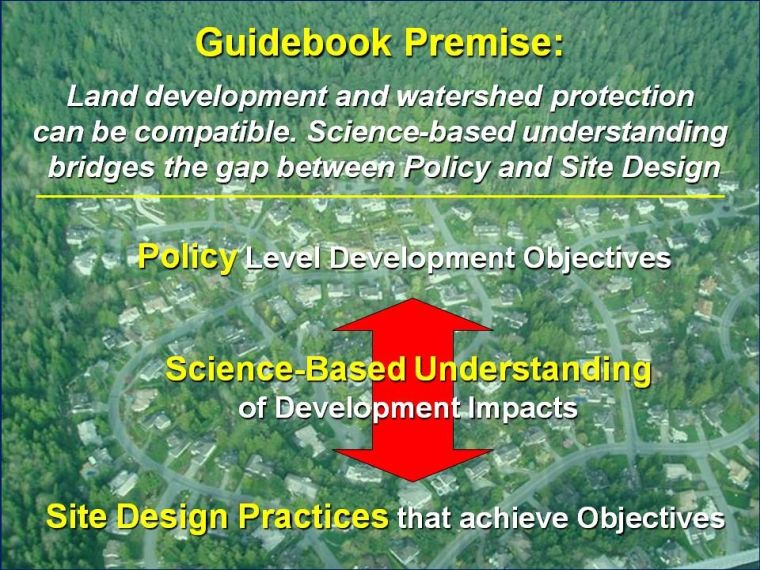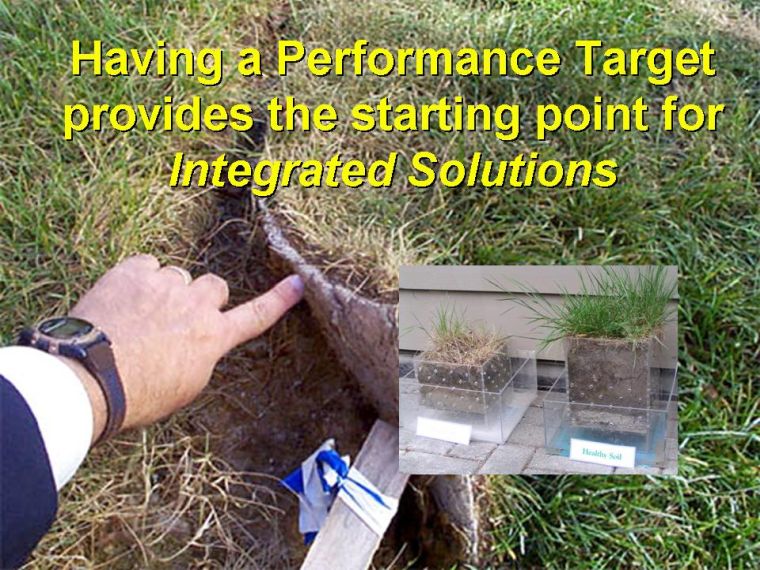STORMWATER PLANNING: A GUIDEBOOK FOR BRITISH COLUMBIA – “The Guidebook also introduced the concept of performance targets to facilitate implementation of the integrated strategy for managing the complete rainfall spectrum,” stated Kim Stephens, Guidebook project manager & principal author

British Columbia Guidebook pioneers North American application to rainwater management
“Published in 2002, Stormwater Planning: A Guidebook for British Columbia was a catalyst for change that has resulted in British Columbia achieving international recognition as a leader in implementing a natural systems approach to rainwater management. It opened the door to  implementing a regulatory approach to designing with nature,” stated Kim Stephens, Guidebook project manager and principal author.
implementing a regulatory approach to designing with nature,” stated Kim Stephens, Guidebook project manager and principal author.
“The Guidebook premise that land development and watershed protection can be compatible represented a radical shift in thinking in 2002. The Guidebook recognized that water volume is something over which local government has control through its infrastructure policies, practices and standards.
“The Guidebook was also a pioneer application in North America of ‘adaptive management’ in a rainwater management setting. In the Guidebook, adaptive management means: We change direction when the science leads us to a better way.”
The Goal
“The goal of adaptive management is to learn from experience and constantly improve land development and rainwater management practices over time,” continued Kim Stephens. “This requires ongoing monitoring of demonstration projects to assess progress towards performance targets and the shared watershed vision.”
To Learn More:
Click on this link to The Adaptive Management Approach to download an illustrative graphic from the Guidebook.

Integrated Strategy for Managing the Rainfall Spectrum
The Guidebook introduced two other innovations that are inter-linked with each other and with an adaptive management approach. The first was the concept of an integrated strategy for managing all the ‘rainfall-days’ that occur each year. The Guidebook also introduced the concept of performance targets to facilitate implementation of the integrated strategy for managing the complete rainfall spectrum.

Three Tiers
To create a mind-map for practitioners, the rainfall spectrum was defined in terms of three tiers, with each tier corresponding to a component of the integrated strategy, namely:
- Rainfall Capture – keep rain on site by means of ‘rainfall capture’ measures such as rain gardens and infiltration soakaways
- Runoff Control – delay overflow runoff by means of detention storage ponds which provide ‘runoff control’
- Flood Mitigation – reduce flooding by providing sufficient hydraulic capacity to ‘contain and convey’
Defining rainfall tiers simply enabled a systematic approach to data processing and identification of rainfall patterns, distributions and frequencies. A key message is that ‘light showers’ account for most of the annual rainfall volume; and therefore ‘green’ or landscape-based solutions will achieve a variety of objectives encompassing both the site and watershed scales in the urban environment.
Volume-based thinking leads directly into landscape architecture, green roofs, urban reforestation, groundwater recharge, and rainwater harvesting.

Setting Performance Targets
Building on the concept of tiers, the Guidebook developed a 6-step methodology for setting performance targets and site design guidelines. The Guidebook emphasis, however, is on the last two steps in the 6-step methodology, namely:
- Evaluate source control options through continuous simulation water balance modeling (Step #5) – because continuous simulation provides a tool to evaluate site design options under a full range of operating conditions (i.e. the complete rainfall spectrum).
- Optimize rainwater system design through adaptive management – ‘learning by doing’ – (Step #6) – because performance monitoring would be expected to confirm that initial assumptions based on the Water Balance Methodology are conservative; and if so, this would provide the certainty needed to reduce the size of facilities installed in subsequent developments.
Rainwater runoff capture targets provide a starting point to guide the actions of local government and the development community in the right direction.
To Learn More:
For the complete story on the 6-step methodology, click on the link to Chapter 6 from Stormwater Planning: A Guidebook for British Columbia.

Learning by Doing
The goal of adaptive management is to learn from experience and constantly improve rainwater management practices.
When Stormwater Planning: A Guidebook for British Columbia was published in 2002, its success and acceptance were keyed to the fact that the water balance methodology had been vetted through the case study experience of local governments and the development community.
The concepts and methodologies in the Guidebook were intended to stimulate a change in the mindset of practitioners and others, rather than cast in stone a set of prescriptive rules.
The Guidebook emphasizes that rainfall capture targets will depend on site and watershed-specific conditions.
Implicit in an adaptive management approach is recognition of the need to both accept and manage risk if the state-of-the-practice is to be advanced. Accepting risk opens the door to engineering creativity and resulting innovation.

Building on Experience
Major projects lend themselves to adaptive management when they are implemented in phases over a multi-year period. Phasing creates opportunities to monitor performance of rainwater capture facilities, assess effectiveness over time, and refine design criteria as may be needed or desired in subsequent phases.
During the period 2002 through 2007, experience has shown that landscape-based measures for rainfall capture are typically low risk, especially when they reflect an understanding of how to employ soil depth and planting coverage to best advantage. This experience has set the stage for the next leap forward – which is to apply a ‘runoff-based approach’ to rainwater management at a watershed scale.
Beyond the Guidebook is an initiative that builds on the Guidebook foundation by advancing a runoff-based approach and tool – the ‘Water Balance Model powered by QUALHYMO’ – to help local governments achieve desired urban stream health and environmental protection outcomes at a watershed scale.


